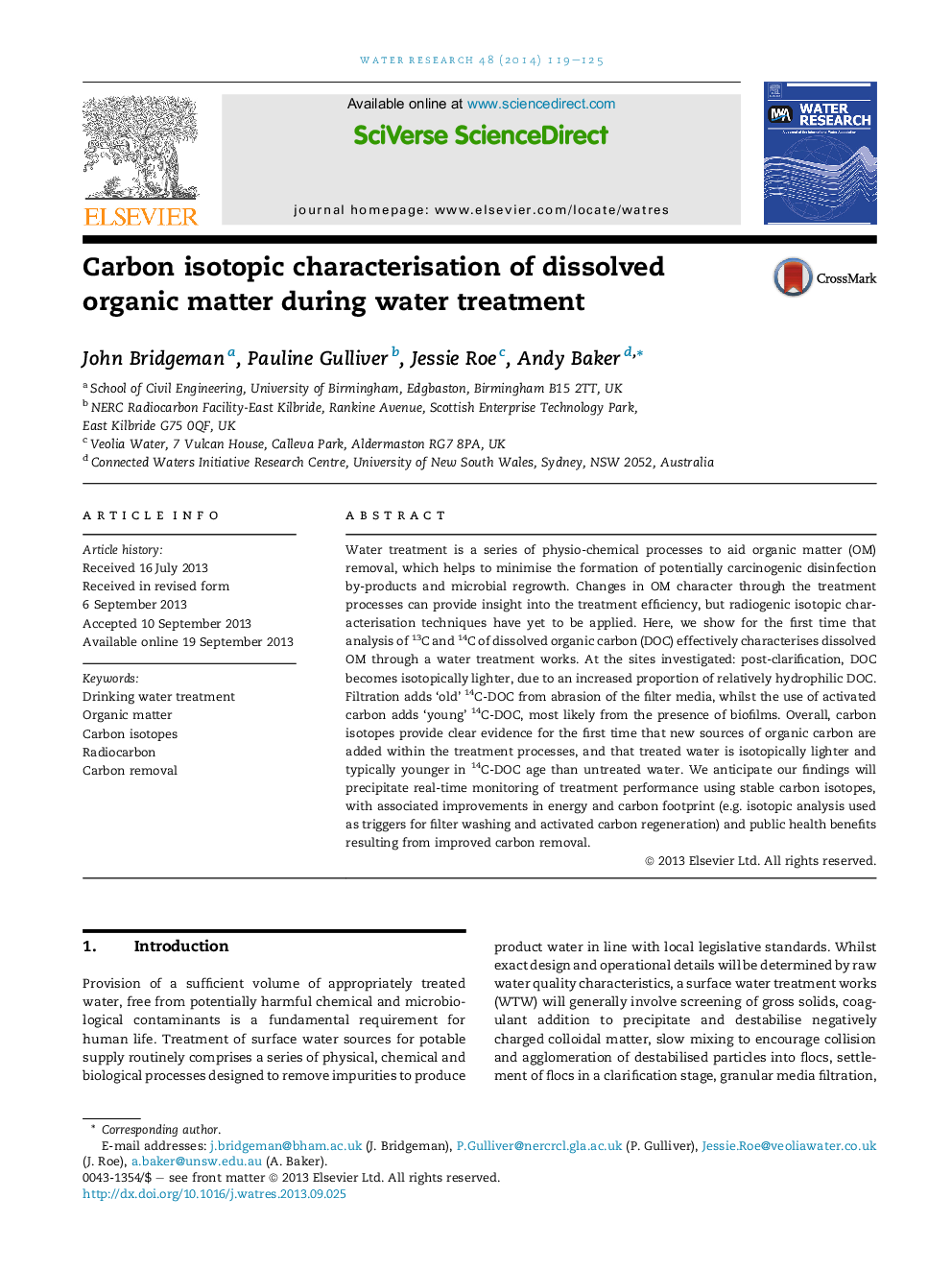| Article ID | Journal | Published Year | Pages | File Type |
|---|---|---|---|---|
| 6367147 | Water Research | 2014 | 7 Pages |
â¢Carbon isotopes in dissolved organic matter during water treatment are measured for the first time.â¢Carbon isotopes reveal carbon addition during drinking water treatment.â¢The addition of organic carbon during treatment has implications for energy use.â¢Global carbon footprint of water treatment under different treatment efficiencies is quantified.
Water treatment is a series of physio-chemical processes to aid organic matter (OM) removal, which helps to minimise the formation of potentially carcinogenic disinfection by-products and microbial regrowth. Changes in OM character through the treatment processes can provide insight into the treatment efficiency, but radiogenic isotopic characterisation techniques have yet to be applied. Here, we show for the first time that analysis of 13C and 14C of dissolved organic carbon (DOC) effectively characterises dissolved OM through a water treatment works. At the sites investigated: post-clarification, DOC becomes isotopically lighter, due to an increased proportion of relatively hydrophilic DOC. Filtration adds 'old' 14C-DOC from abrasion of the filter media, whilst the use of activated carbon adds 'young' 14C-DOC, most likely from the presence of biofilms. Overall, carbon isotopes provide clear evidence for the first time that new sources of organic carbon are added within the treatment processes, and that treated water is isotopically lighter and typically younger in 14C-DOC age than untreated water. We anticipate our findings will precipitate real-time monitoring of treatment performance using stable carbon isotopes, with associated improvements in energy and carbon footprint (e.g. isotopic analysis used as triggers for filter washing and activated carbon regeneration) and public health benefits resulting from improved carbon removal.
